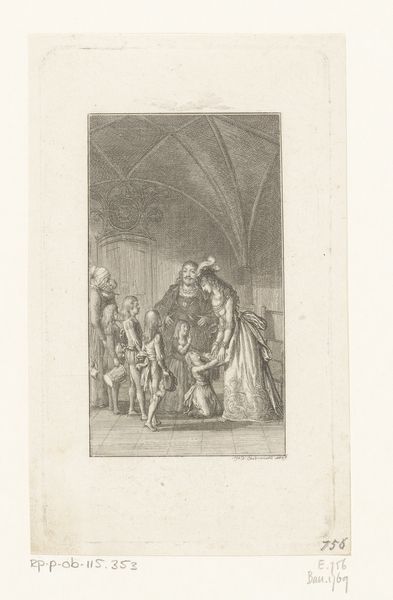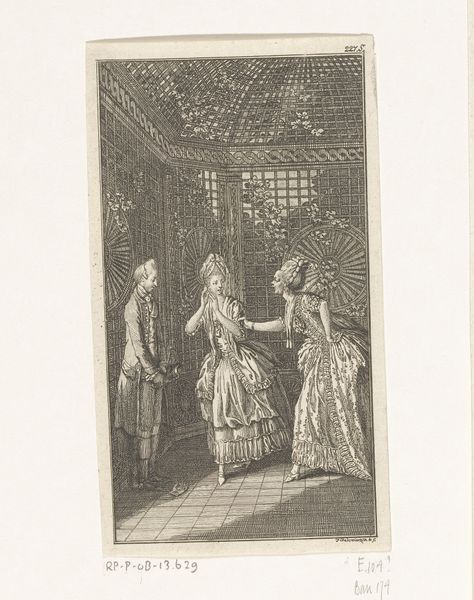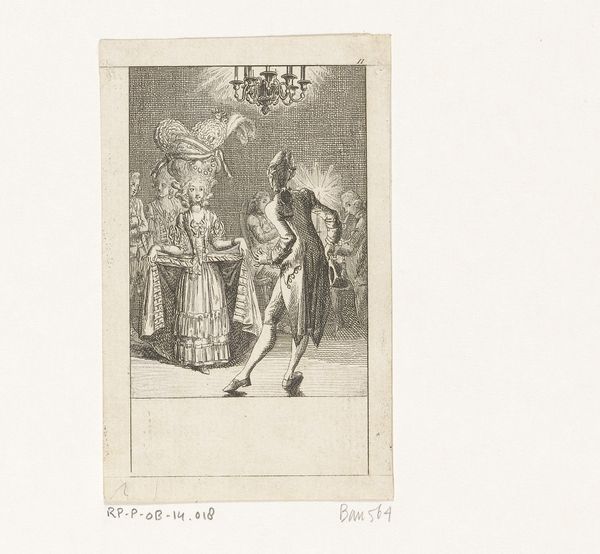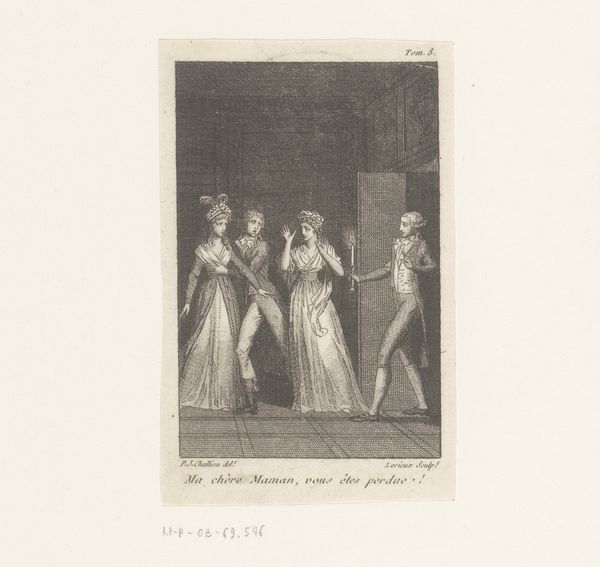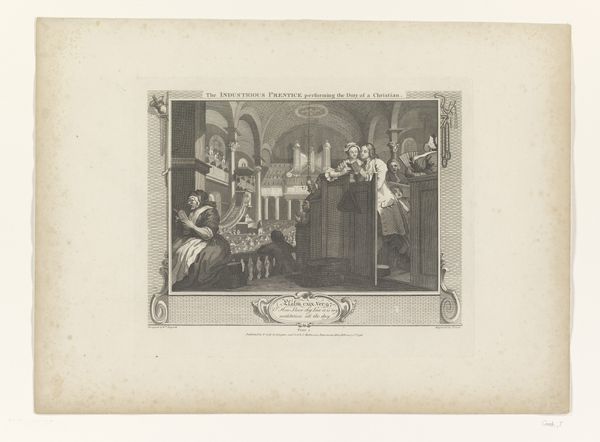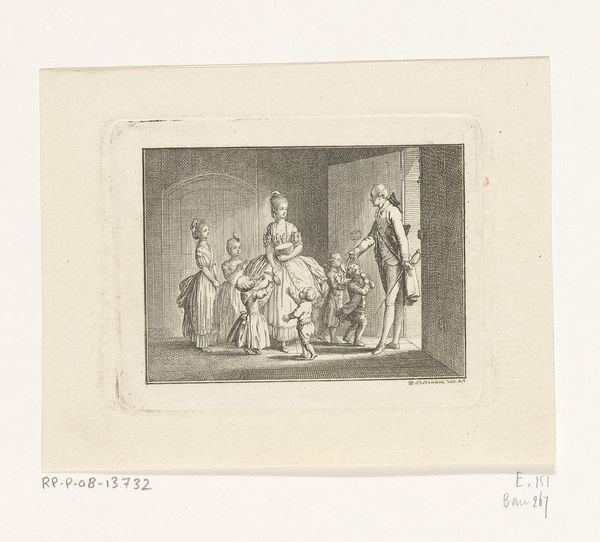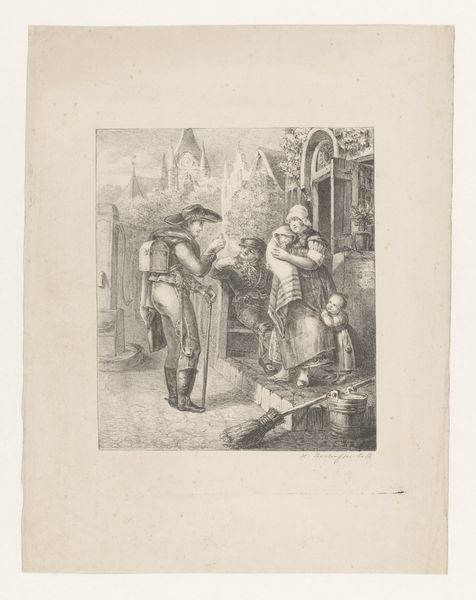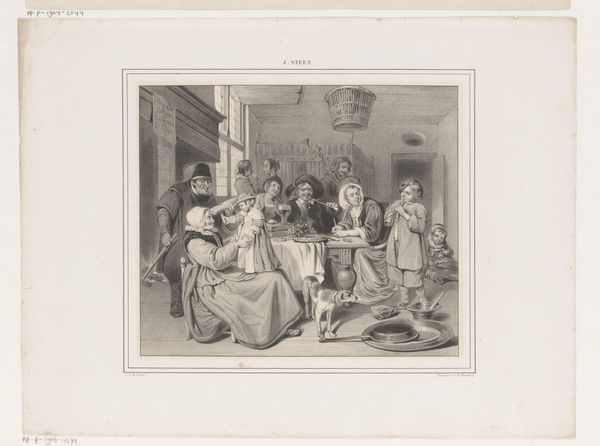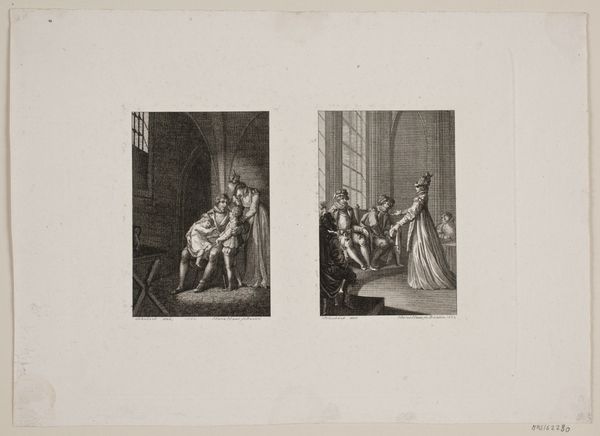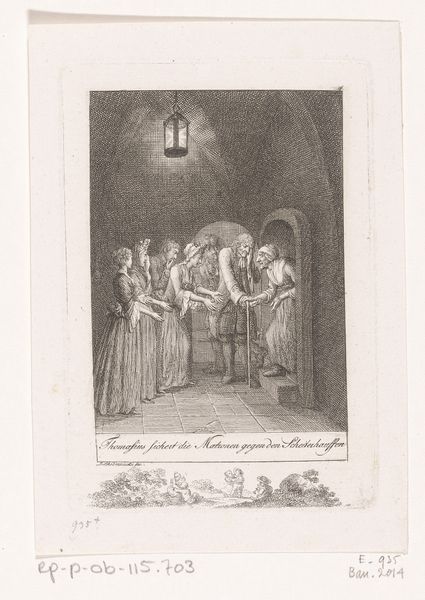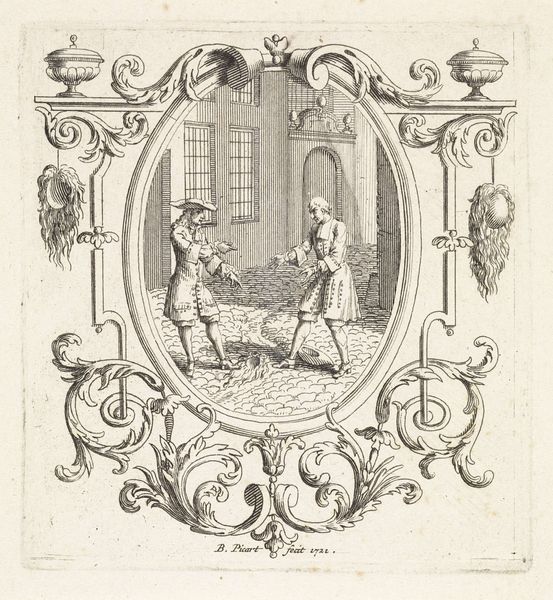
print, engraving
#
narrative-art
# print
#
genre-painting
#
history-painting
#
engraving
#
realism
Dimensions: height 160 mm, width 124 mm
Copyright: Rijks Museum: Open Domain
This print, "Vrouw reikt haar man zijn zwaard," was made by Henricus Wilhelmus Couwenberg in the 19th century using etching, a printmaking technique that relies on the corrosive action of acid to create lines in a metal plate. Look closely, and you can see the artist would have covered a metal plate with a waxy, acid-resistant substance, then scratched an image into it with a pointed tool, exposing the metal underneath. The plate was then immersed in acid, which bit into the exposed lines, creating grooves. The longer the plate remained in the acid, the deeper and darker the lines would be. The etched plate was then inked, and the surface wiped clean, leaving ink only in the etched lines. Finally, the plate was pressed onto a sheet of paper, transferring the ink and creating a print. This process could be repeated multiple times to create an edition of identical images, allowing for wider distribution of imagery, ideas, and narratives. Understanding the etched process helps us appreciate the labor and skill involved in creating these images, which democratized art making and helped to circulate powerful stories.
Comments
No comments
Be the first to comment and join the conversation on the ultimate creative platform.

